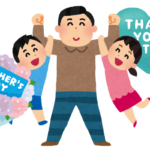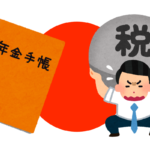
During a physical examination at his place of employment, his naked eye vision was 0.3. He forgot to bring his glasses with him that day, so he did not know his corrected vision.
She wears a hood at his current job, and when she wears glasses, the vine part of the glasses tightens around his temples, causing her pain. Therefore, she wants to wear contact lenses.
While eyeglasses can be purchased quickly by going to an optician and having an eye exam, contact lenses can only be purchased after a visit to an ophthalmologist. So on Saturday (April 1), I decided to go to the Shimizu Ophthalmology Clinic in Kashiwa City.
First, I checked in at the ophthalmologist's office and was taken to Rose Contacts in the same location for a counseling session. The counseling consisted mainly of an explanation of the types of contact lenses and their products. I was told that contact lenses (not only vision correction lenses but also colored contact lenses) are treated as highly controlled medical devices and require a prescription from an ophthalmologist, as well as a license from the prefectural governor and a sales manager. Therefore, the next and subsequent purchases of contact lenses can only be made after a consultation at an ophthalmologist's office, according to the company.
Since this is my wife's first time wearing contact lenses, we decided to get her used to disposable lenses and then switch to two-week lenses. After the counseling, she had an eye examination. She said she was 0.3 at the physical exam, but I was 0.1 and 0.2. By the way, I was about 0.01, and even the largest symbols were blurred.
After the eye exam, the intraocular pressure was measured, and the doctor examined the fundus and confirmed that there were no abnormalities before actually fitting the contact lenses.
My wife was not afraid to put them on, and she has large eyes, so they went on easily. According to the person who explained the fitting process, some people take about an hour. She practiced putting them on and taking them off by herself and finished.
It took about 2 hours from the reception to the end of the contract.
The price for 30 contact lenses was 5,500 yen (including tax), which I thought was cheap, but since it was for both eyes, the price would double to 11,000 yen. I was told that if I joined Menikon's subscription Merus Plan, the monthly price would be 5,500 yen, so I decided to go with that plan. I was told that I could change from disposable type to 2-week type in the middle of the subscription, which would be half the price. I will consider whether or not to switch after about three months.
I heard that the system is to go to the ophthalmologist every three months and receive the next three month's prescription, which is much more troublesome than the eyeglasses system.
By the way, when purchasing contact lenses in Cebu, it is said that it takes only about 30 minutes, including a consultation with an ophthalmologist, and the price is said to be cheaper than in Japan. Moreover, unless the lens power is changed, it is possible to buy contact lenses right away at a store without a medical examination.
I thought that Japan has a system that favors the supply side, regardless of what it is.









